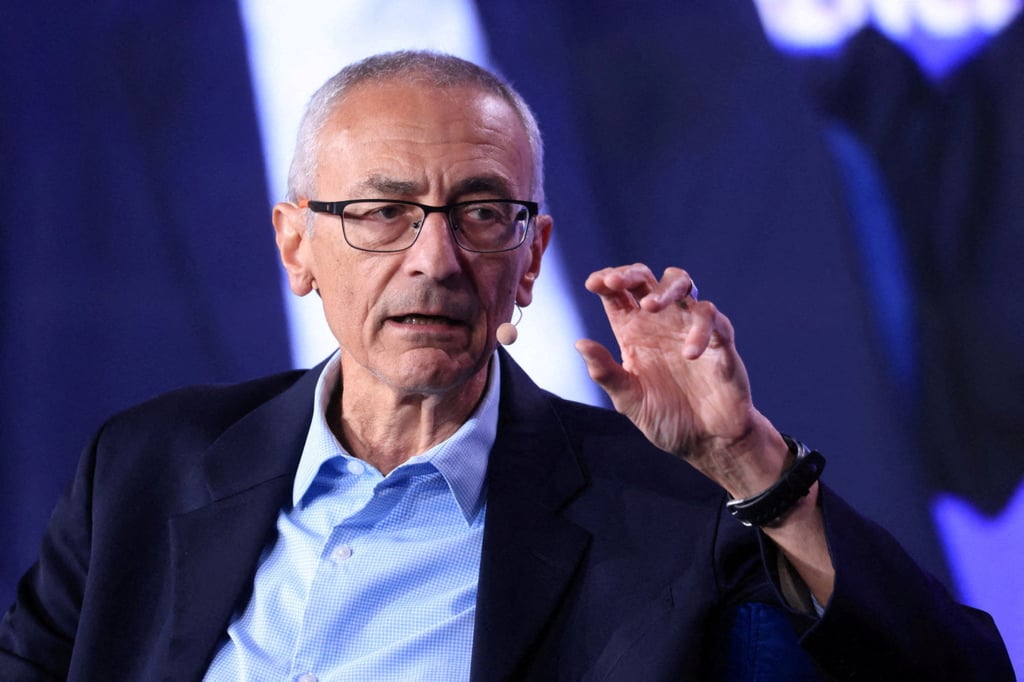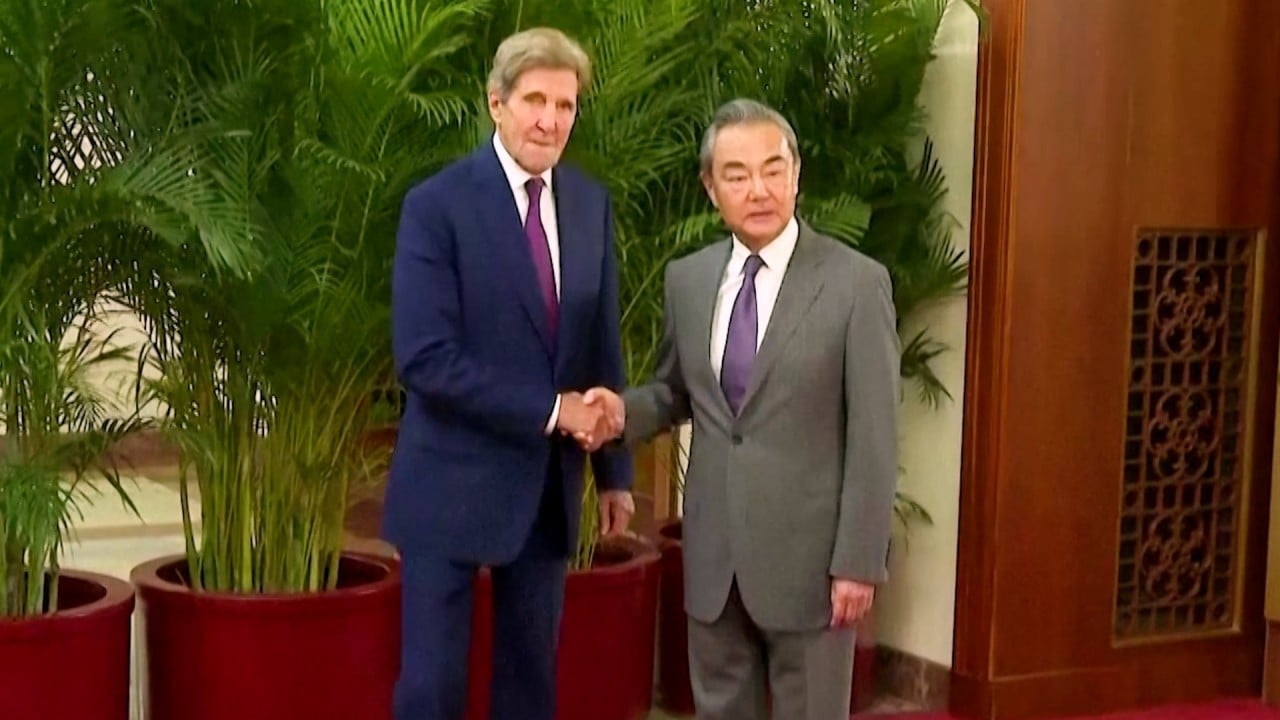John Podesta, the top US climate diplomat, is heading to China. It is no coincidence that Podesta may be the last high-level US official to set foot in Beijing before the presidential election and that his predecessor, John Kerry, was the first dignitary to visit China in 2021 after Joe Biden took office.
In fact, this reflects the important role climate has played in tempering bilateral ties. However, as the 2022 suspension of talks showed, this current model of engagement also has its limits and could be tested again after the US election.
Yet, the envoy’s visit could position the Biden administration to cap off its climate legacy with China by allowing for a reset of the relationship on a stronger footing come November, if the Democrats are elected.
This will require tapping into China’s desire to stabilise bilateral relations as the US transitions to a new administration and working with Beijing to take advantage of a confluence of events later this year, especially a potential meeting between Biden and Chinese President Xi Jinping.
At a basic level, Podesta’s visit is an opportunity to sustain discussions with his counterparts on key US-China working group topics, including accelerating the energy transition away from coal and strengthening the regulation of potent, non-carbon gases such as methane.
Podesta is likely to share US expectations for China’s updated climate targets, which are due by early 2025. According to our modelling at the Asia Society Policy Institute, by 2035, China needs to reduce its greenhouse gas emissions by at least 30 per cent from an imminent peak to align with the Paris Agreement’s goal to limit temperature rise to 1.5 degrees Celsius – which Beijing said it would do in last year’s Sunnylands Statement.
Podesta has hinted that the US could announce its own targets before the end of 2024, thus raising the stakes for China’s plans. At the same time, Beijing might want to see evidence that the US is capable of achieving its own lofty goals and is willing to work collaboratively with all countries to help them do the same.
A discussion pushing towards agreement on a new global goal for climate finance could also be on the cards ahead of the negotiations this November at the COP29 climate talks in Baku, Azerbaijan.
China has chafed at pressure from the US, the European Union and other advanced economies to require contributions from emerging economies with the “capability” to do so, while advanced economies want an expansion of the contributor base. Achieving a US-China consensus has historically paved the way for multilateral outcomes, including the Paris Agreement, and might be critical this time as well.
Yet, while Podesta’s points might be heard, there is less likely to be substantive progress. For true leadership from the world’s two largest greenhouse gas emitters to be possible, the current bilateral dynamics need to be reset.
Of course, this trip to China takes place against the overwhelming backdrop of the US presidential election in early November. Any authority that Podesta yields could shift dramatically, depending on the outcome.
Should former president Donald Trump secure a second term, he has threatened to demolish American credibility by pulling the US out of the Paris Agreement again and potentially even the entire UN climate regime.
Direct climate talks between the US and Chinese governments are likely to be eliminated during his first year. This would be a serious setback for multilateral climate progress, not to mention that Trump’s policies could add emissions equal to the annual footprint of the EU and Japan combined by 2030.
To plan for a worst-case scenario, the US and China could further institutionalise subnational and nonstate climate cooperation. While California has long cultivated a climate agenda with China and several of its provinces, involving more regions and cities could scale up progress. Non-governmental actors and expert groups could also advance outcomes on the same issues that have been prioritised in official US-China working group discussions.
On the other hand, a potential Kamala Harris-Tim Walz administration could deliver the much-needed opportunity to reset the entire dynamic of US-China cooperation.
The greatest achievement by Podesta, therefore, would be an affirmation from his Chinese counterparts that climate progress can be enabled by both sides and that disagreements on thornier issues should not block making headway on the most existential ones.

If the US and China were to move together on their respective climate targets, as they did back in 2014 ahead of the Paris negotiations, that could jump-start such a reset. Washington and Beijing could then pursue joint goals and actions that advance global progress, such as by working together to supercharge much-needed climate finance and technologies for the Global South.
Voting will take place in the US election just before COP29 and the Group of 20 meeting of the world’s largest economies in Brazil. The G20 is the most likely opportunity for Biden and Xi to meet after their summit in San Francisco last year. Its timing near the end of COP29 also offers a potential opportunity for the two leaders to inject momentum by coordinating their messaging on climate change.
Biden has only a few more months to seal his legacy. If he can work with Xi to transcend politics for the sake of our planet’s future, the entire world will thank him.
Kate Logan is associate director of climate at the Asia Society Policy Institute and a fellow at the Centre for China Analysis



